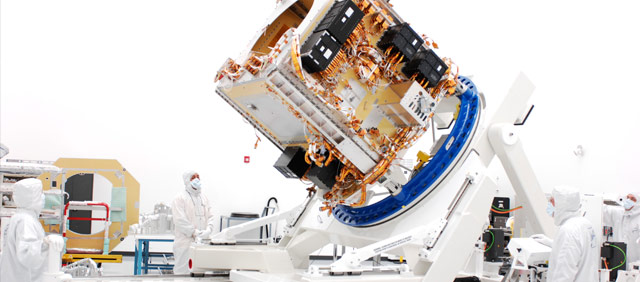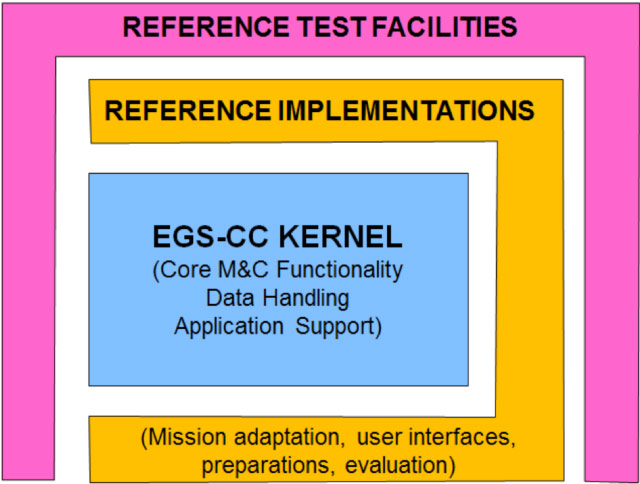
The EGS-CC system comprises of the software source code and binaries for a given EGS-CC based system. The EGS-CC is a common software infrastructure to support space systems monitoring and control in pre- and post-launch phases for all mission types.
The EGS-CC is intended to provide main building blocks and reference implementations for Mission Control System (operations) and Electrical Ground Support Equipment Monitoring and Control Systems (spacecraft AIT).
Features
The main system features include:
- Support of all mission types
- Support of all types of space systems
- Support of all mission phases
- Open, component based, service oriented architecture
- Generic and extensible functionality
- High performance and scalability
- Layered implementation
- Clear separation between generic M&C functions (kernel) and specific features of the controlled system (adaptation layer)
- Clear separation between infrastructure (EGS-CC proper) and specific additions (EGS-CC based applications)
- Long term maintainability
- Inter-operability through standardised interfaces
- Support of long term evolution though technology isolation (as far as possible)
Layers
EGS-CC aims to provide a common set of building blocks to develop M&C systems, as well as complete implementations of reference applications (MCS and EGSE systems).
It is specified and design in three main layers:
- Kernel, which contains the generic functionality applicable to all applications and missions, for both general purpose, and monitoring and control functions. It is intended to be reused across all EGS-CC based systems for all applications, missions and purposes and cannot be modified.
- Reference implementations, containing application specific functionality, intended to be applied in some but not all EGS-CC based systems. This layer is what adapts EGS-CC software to a given application and mission. The reference implementations may be replaced or adapted for the specific needs of a mission or organisation. The EGS-CC will provide specific reference implementations for a selected category of missions and applications (e.g. PUS spacecraft, SLE ground stations).
- Reference test facilities, providing external functionality needed for testing EGS-CC based systems in isolation. Test facilities are not part of EGS-CC based systems, but implemented for supporting tests.

Scope
The functional scope of EGS-CC covers:
- Component framework, runtime platform, communications, and service integration
- Application support
- System configuration, file management, messages, security, and time synchronisation.
- M&C components
- M&C modelling and processing, including parameter monitoring, control activities, verification, and events, supporting live, playback, retrieval and replay modes.
- Data archive
- Automation procedures
- M&C services provision
- M&C adaptation for MCS and EGSE
- CCSDS TM/TC processing
- Modelling of onboard services, PUS standard
- Ground station interface and SLE
- User interfaces:
- User desktop, displays, applications, M&C model browser.
- Off-line tools:
- Preparation tools
- Basic post-processing and reporting tools
- Testing environment to support development

